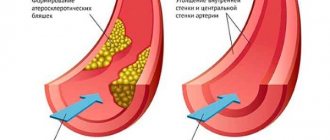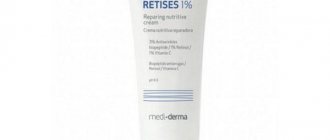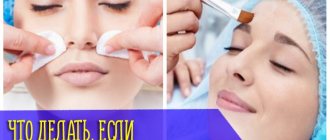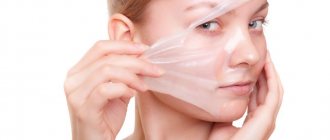What is Azelaic acid and how does it work?
AA is a carboxylic acid that is formed naturally on normal skin during lipid metabolism and is found in small quantities in the human body. When applied to the skin, AK preparations easily penetrate the epidermis and dermis, with up to 4% of the total dose entering the systemic circulation.
Functions performed by AK on the skin
- Anti-inflammatory effect – stops the inflammatory process.
- Antioxidant effect – binds free radicals.
- Antimicrobial effect (bactericidal) – effective against gram-positive and gram-negative microorganisms, suppresses the transition of C. Acnes to a pathogenic form, retains the skin microbiome (bacterial flora), thereby reducing the load on the immune system.
- Keratolytic effect - eliminates hyperkeratosis of the mouths of the sebaceous glands follicles.
- Normalizes the process of differentiation of epidermal cells.
- Lightening effect - suppresses melanin synthesis by inhibiting the enzyme tyrosinase.
- Antiandrogenic effect - suppresses the synthesis of type I 5α-reductase, which leads to a decrease in the content of dehydrotestosterone in sebocytes, thereby normalizing the processes of keratinization and sebum secretion.
According to the latest data, AK has an antifungal effect against fungi of the genus Pityrosporum ovale and Candida albicans, which are resistant to antibiotics. Microorganisms do not develop resistance to AK itself even after prolonged exposure.
Indications for use
Yellow peeling is one of the safest, most effective exfoliation procedures. Used for all skin types, in the presence of rashes, excessive secretion of glands, as well as for rejuvenation of the integument. The procedure can be carried out according to indications or to maintain the normal state of the dermis. Retinoic peeling affects only the superficial layers of the epidermis, can be included in an anti-aging program, and combines well with other procedures.
Indications:
- aging skin with traces of sagging;
- hyperpigmentation;
- wrinkles of varying degrees;
- oily shine, wide pores;
- comedones, acne;
- rosacea;
- marks after acne.
Peeling with azelaic acid
Study
A study was conducted on the effect of AA, which is part of the surface peeling, on the secretion of sebum in various areas of the face in women.
Research data:
- 11 women aged 49-71 years
- Measuring sebum levels with a sebum meter
- Peeling course – 5 procedures with an interval of 2 weeks
Results:
Decreased sebum production
even out skin tone,
narrowing of pores,
reduction of inflammatory elements of acne.
How does AK work as part of a peeling?
- Has a sebum-regulating effect;
- Evens out skin tone;
- Works against acne and prevents the appearance of new rashes;
- Increases skin tone and elasticity;
- Evens out skin texture.
Summary
Peeling with azelaic acid is ideal for adult skin prone to inflammatory acne and rosacea; Peeling is effective for enlarged pores and oily skin; Azelaine peeling works against age spots.
Chemical peeling
Chemical peeling is a procedure of applying preparations based on various acids to the skin. Their action is aimed at exfoliating cells of the surface layer of the skin of varying depths, depending on the strength and type of substance. The pores of the sebaceous glands are cleansed, and due to superficial damage, active regeneration and stimulation of skin cells occurs, which ultimately leads to the active production of collagen and elastin.
Prices
| Procedure | Price |
| Chemical peels | |
| Dairy | |
| "Lactipeel" (80% lactic acid, 11% DMAE), year-round, "Mediderma", Spain | 3,000 rub. |
| "Argipeel" (20% arginine, 20% lactic acid, 5% urea), year-round, "Mediderma", Spain | 3,000 rub. |
| Glycolic | |
| "Sesglicopeel S" (20% lactic acid, 15% glycolic acid, 10% salicylic acid, 5% citric acid - pH 2.5), "Mediderma", Spain | 3,000 rub. |
| “Sesglicopeel K” (33% glycolic acid, 9% lactic acid, 7% kojic acid, 5% citric acid, 3% salicylic acid - pH 2.5), “Mediderma”, Spain | 3,000 rub. |
| "Sesglicopeel KH" (44% glycolic acid, 10% citric acid, 5% kojic acid, 3% lactic acid, 2% hydroquinone - pH 2.0), "Mediderma", Spain | 3,000 rub. |
| Chemical peeling with glycolic acid 25%, 50%, 70%, “Premium”, Russia | 2,000 rub. |
| Glycolic peeling with phytohormones “Renophase”, France | 5,000 rub. |
| Almond | |
| "Mandelac L" (35% mandelic acid, 20% lactic acid), "Mediderma", Spain | 3,500 rub. |
| "Mandelac C" (20% mandelic acid, 30% citric acid), "Mediderma", Spain | 3,500 rub. |
| Salicylic acids | |
| "Salipeel" (25% salicylic acid in hydroalcohol solution), "Mediderma", Spain | 3,500 rub. |
| "Salipeel plus" (25% salicylic acid, 15% azelaic acid), "Mediderma", Spain | 3,500 rub. |
| Pyruvic (green) | |
| "Pyruvicpeel LA" (25% pyruvic acid, 25% lactic acid), mild | 3,500 rub. |
| "Pyruvicpeel P" (40% pyruvic acid, 5% lactic acid), medium | 3,500 rub. |
| "Pyruvicpeel PP" (50% pyruvic acid, 5% lactic acid), strong | 3,500 rub. |
| Jessner peels | |
| "Melaspeel R" (14% lactic acid, 14% resorcinol, 5% citric acid, 5% kojic acid, 2% salicylic acid, 2% hydroquinone), "Mediderma", Spain | 3,500 rub. |
| "Melaspeel J2" (25% resorcinol, 10% lactic acid, 8% salicylic, 5% citric), "Mediderma", Spain | 3,500 rub. |
| "Melaspeel G" (14% lactic acid, 14% salicylic, 10% glycolic, 2% citric), "Mediderma", Spain | 3,500 rub. |
| Retinoic | |
| “Block-age-peel” (5% retinol, 50% Dimexide), “Medic Control Peel”, Russia | 3,000 rub. |
| "Retises CT" (4% retinol, 15% lactic acid, 1% retinol propionate + activator - 10% ascorbic acid, 5% niacinamide), carried out with preliminary application of "Salipeel DS", "Mediderma", Spain | 5,000 rub. |
| Trichloroacetic (TCA) | |
| "Easypeel" (15% trichloroacetic acid), "SkinTech", Spain | 5,000 rub. |
| Peeling TCA Security Kit (15% trichloroacetic acid), Toskani, Spain | 5,000 rub. |
| TCA-CROSS peeling | |
| 1 element | 100 rub. |
Expand price / Collapse
Candidate of Medical Sciences Nikolay Lapshin talks about chemical peels
This type of peeling is used to rejuvenate the skin, giving it elasticity, firmness and a healthy color. This procedure is also prescribed to remove cosmetic defects such as age spots of various etiologies, scars, scars and the consequences of acne. Copes perfectly with problem skin prone to oiliness. Prescribed to prevent wrinkles and other age-related changes and premature signs of aging.
Various types of acids are used for chemical peeling:
- glycolic,
- trichloroacetic,
- retinoic,
- pyruvic,
- salicylic,
- as well as combined formulations, including several types of different acids.
Operating principle
Any acid essentially causes a superficial burn to the skin, however, such damage is “for its benefit”: the necessary processes of restoration and formation of new skin are activated. The depth of the peeling effect depends on what kind of acid it will be performed with, as well as on its concentration.
Types of peelings
There are several types of chemical peels. They are classified depending on the strength of the acid:
Superficial peeling
(in case the upper stratum corneum is affected). This category includes almond, pyruvic, glycolic, retinoic. Used to correct small wrinkles, as well as shallow age spots and prevent their occurrence. It perfectly fights the signs of biological and photoaging of the skin, as well as such an unpleasant phenomenon as stretch marks (striae). To enhance the effect, superficial peels are often combined with deeper types.
Towards the middle
This type includes TCA peeling based on trichloroacetic acid, Jessner peels (combined). The effect occurs on the epidermal layer of skin, which is affected by deep wrinkles or scars. The peculiarity of this peeling is that it can be used even at a young age.
Deep peeling
- the most radical, since in this case the effect of the drug extends to the entire epidermis, right down to the basement membrane. This includes phenol peeling, which provides a lasting result after the skin has completely healed.
Carrying out the procedure
The chemical peeling procedure is carried out strictly in a cosmetology office by a qualified specialist who, having previously examined your skin, determined its type and gave the necessary recommendations for home preparation. This involves using a mild glycolic solution several weeks before your scheduled procedure day.
A session at the clinic begins with your skin being cleansed and degreased with special products to normalize the acid balance. The active substance is evenly distributed on the skin, after which it is carefully removed and treated with a post-peeling composition that neutralizes the acid. The exposure time ranges from several minutes with glycolic peeling to 6-8 hours with retinoic peeling. During the procedure, the patient may feel a slight to severe burning sensation, depending on the strength of the acid.
The course of sessions depends on your skin type and the problem being solved, but on average it is 2-5 visits, the interval between which varies from 10 days to 2-3 months. After the procedure, you should avoid tanning for a while and limit visits to the bathhouse, sauna and swimming pool.
Benefits of Chemical Peels
A cosmetic procedure such as chemical peeling has many advantages. Due to the exfoliating effect, hyperkeratosis is reduced, as well as the number of keratinized dead cells; new ones, on the contrary, begin to be intensively produced. The activation of cells synthesizing elastin and collagen fibers occurs to a significant extent. Cellular metabolism is enhanced, and skin turgor and texture are improved. In our center we use peelings from such manufacturers as Cosmedix, Mediderma, and Salon Cosmetics.
Preparatory stage
Yellow peeling is carried out in the salon by an experienced cosmetologist. To achieve the desired goals, you should follow all the doctor’s recommendations. A responsible campaign will ensure a lasting, pronounced result. The doctor will assess the condition of the integument, take an anamnesis, and may require consultation with specialists. The preparation stage begins a month in advance and includes a number of rules:
- It is advisable to add fruit acids to cosmetic products, this will enhance the effect of peeling; the concentration of retinol should not exceed 1%;
- for dry skin, as well as for patients over 35–40 years of age, it is recommended to carry out mesotherapy and biorevitalization first;
- if you are prone to herpes inflammation, the doctor will prescribe preventive antiviral drugs;
- You cannot sunbathe, visit the solarium, and you must refuse the pool, sauna, or gym a week before the scheduled session;
- The composition must be tested for a possible allergic reaction.
Note! Professional peelings are not recommended during periods of maximum solar activity. Cosmetologists advise taking the course from October to March, this will prepare the skin for the spring-summer season, avoiding the appearance of pigmentation.
Advantages and disadvantages
Retises peelings are distinguished by their effective action and fast healing period. The procedure has no age restrictions and is used to care for all skin types. Before you decide to exfoliate, you should learn about the main advantages and disadvantages.
Pros:
- the result is noticeable after the first session;
- allows you to solve a whole range of aesthetic problems;
- suitable for all skin types, including sensitive;
- has a short recovery period;
- side effects are excluded.
Minuses:
- requires coursework;
- high price;
- carried out by a cosmetologist in a salon or aesthetic medicine clinic;
- superficial exposure is not effective for pronounced age-related changes.
Precautionary measures
Despite the versatility of use for different age groups and skin types, mederma peeling has a number of limitations for its implementation. During the consultation, the cosmetologist not only assesses the condition of the skin, but also collects an anamnesis.
You can trust the procedure only to an experienced specialist with a medical education. Only in this case can the likelihood of complications develop be minimized.
Contraindications:
- individual intolerance;
- pregnancy, lactation;
- spring-summer period;
- atopic contact dermatitis, ichthyosis;
- taking roaccutane;
- herpes;
- skin photosensitivity;
- active inflammatory processes;
- damage to the integrity of the integument;
- previous hepatitis, liver pathologies;
- warts, papillomas in the affected area.
In addition to the standard consequences in the form of redness and swelling, the temperature may rise , peeling is observed within 5–7 days, and the epithelium will peel off.
Important! Painful, increasing symptoms, the appearance of local redness, ulcers, and burns should alert you. In such cases, you need to contact a cosmetologist.
Is it possible to do the procedure yourself?
Retinoic exfoliation can only be performed by a specialist. A cosmetologist can professionally assess the condition of the skin, carry out the procedure according to the protocol, and give recommendations during the recovery period. It is difficult to independently control the depth of exposure to active elements; it can lead not only to the development of hypersensitivity, inflammation, irritation, but also to burns. At home, you can use care products containing no more than 1% retinol.
Healing period
After the procedure, discomfort will be present for several days; the final result can be assessed only after a week. Increased sensitivity, tightness, swelling, redness are standard symptoms after yellow peeling. Closer to the third day, the temperature may rise. In most cases, separation of the epithelium is observed, the process is accompanied by severe peeling. During this period, you should follow the cosmetologist’s recommendations for a quick recovery:
- limit touching your face, do not use makeup for several days;
- in the first week you cannot visit the solarium, gym, sauna, or swimming pool;
- post-peeling products Retises, Factor G, Vit-C Medoderm are used for care; hormonal drugs are not used;
- Before going outside, use sunscreen; a cosmetologist will help you choose based on your skin phototype and season;
- you need to drink as much water as possible to speed up tissue recovery;
- You cannot peel off the crusts yourself; only 2 weeks after the procedure you can carry out a light scrub or gommage recommended by a specialist.
Patient reviews
On the Internet you can find many reviews from patients who have experienced the effects of Mediderma peels.
The user describes his experience with retinoic peeling and indicates that in order to achieve the rejuvenation effect, a course of procedures is required.
The participant writes that after use the skin peeled a little, the result depends on the individual characteristics of the skin.
The review states that with such consequences the effect is insufficient.
But there are also disappointed clients. The user writes about the high cost incommensurate with the weak result.
Opinion of cosmetologists
Beauty industry professionals actively share their experience of yellow peeling.
The cosmetologist asks his colleagues about the dosage of Cosmoteros, writes that it is more convenient to take packaged Mediderma.
The specialist is interested in company representatives to replenish stocks.
A cosmetologist writes about the positive experience of using almond and azelaine peeling. Many clients experience active breakouts when using ferulic.











